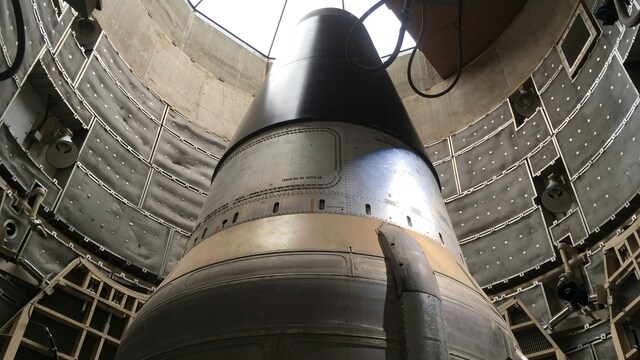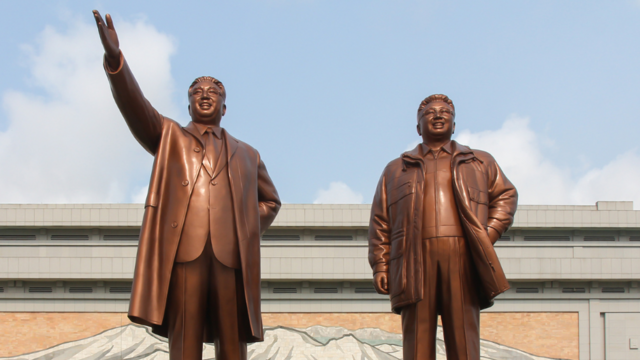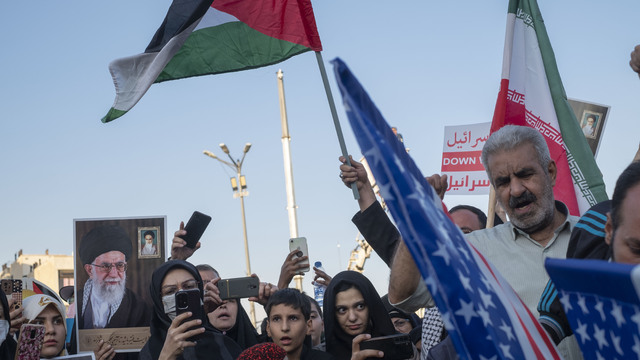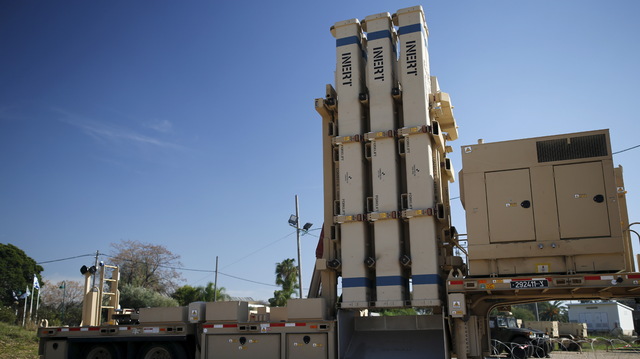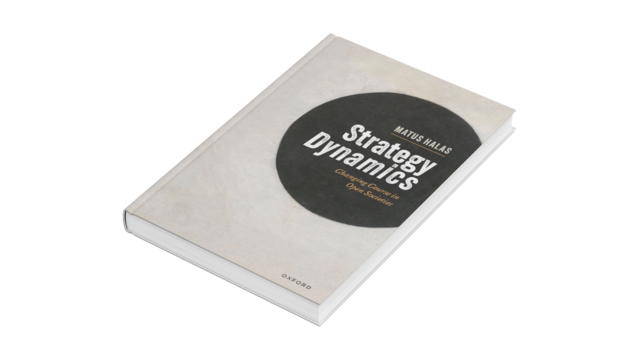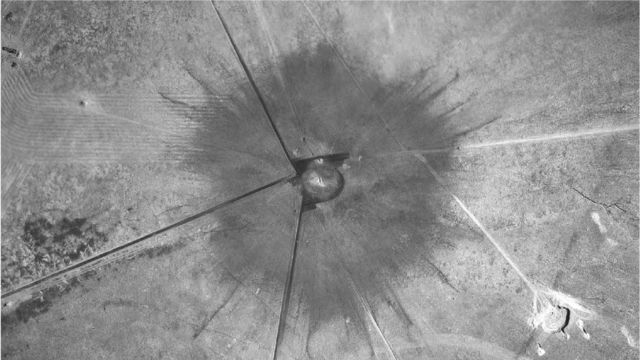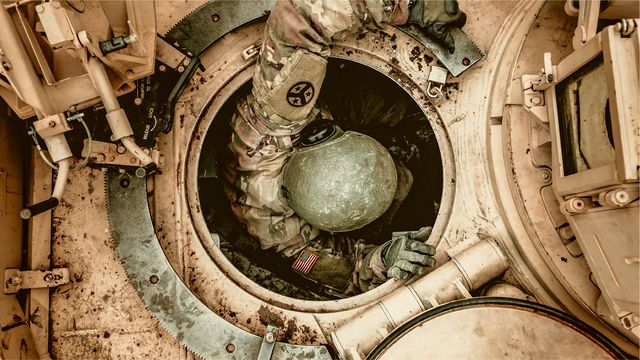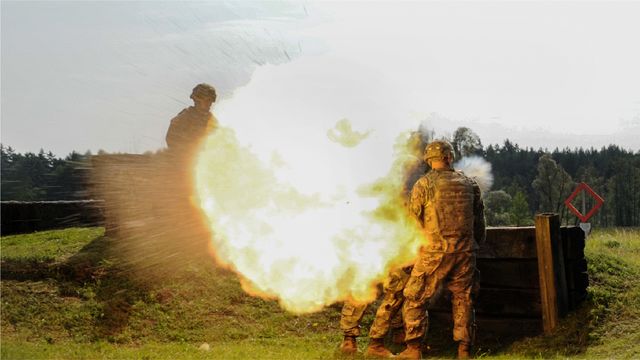Two Important Summits of President Trump
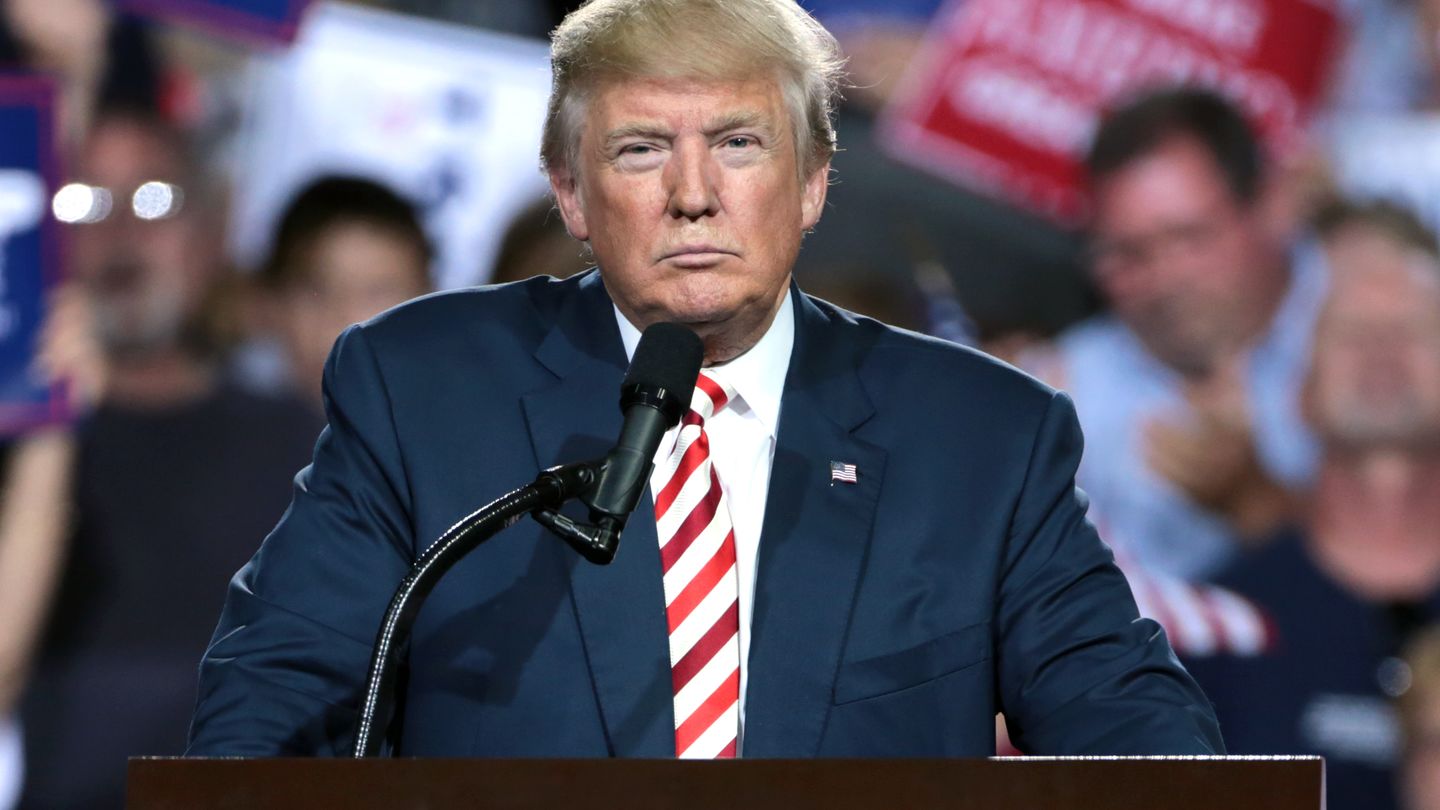
Somewhat surprisingly, in a relatively short time interval, approximately over the course of one month in the middle of this year, two important meetings of the American President Donald Trump were held with the highest representatives of two countries which pose long-term security problems to the USA: the Democratic People’s Republic of Korea (hereinafter the DPRK) and the Russian Federation (hereinafter the RF). The meeting with the North Korean Supreme Leader Kim Jong-un was held on June 12, 2018 in Singapore, and that with the Russian President Vladimir Putin on July 16, 2018 in Helsinki.
Nuclear arms as the common denominator
The extent of the discussed matters at the meetings of the American President with the two statesmen were necessarily in proportion to the incomparable differences in the statuses of the DPRK and the RF on the world scene. Nevertheless all of the three parties were connected by a common denominator, the posession of nuclear weapons, which is defended by the concept of the nuclear deterrence. (Note of the author: this concept is based on an assumption that the danger of a highly devastating nuclear reprisal strike in return for a possible nuclear attack, or an obvious preparation for it, will influence the further behaviour of the potential aggressor and keen him from performing such an act. For a successful deterrence three basic preconditions must be met: the ability of the deterring subject to fulfil the deterring threat, its credibility and a passing of the relevant information about the threat to the challenger in a clear and comprehensible form.)
Regarding the number of nuclear weapons, the estimated amount of North Korean nuclear weapons (from 10 to 20 pieces) is considerably lower than the number of these weapons possessed by the USA and the RF. According to the prestigious non-governmental Stockholm International Peace Research Institute (hereinafter SIPRI), as of January 2018 there was a total inventory of 6,450 nuclear warheads in the possession of the United States of America (of these 1,750 were operationally deployed and 4,700 were the so-called “others”.)
The RF possessed, in total, 6,850 (of these 1,600 were operationally deployed, and 5,250 were the so-called “others”.) If nuclear warheads are operationally deployed it means that they are placed on their means of delivery (land, air, or sea) or that they are located near their means of delivery on military bases. The term “others” refers to nuclear warheads that are held in storages and retired warheads awaiting dismantlement. (Note of the author: at the beginning of this year according to SIPRI, all nine nuclear wepon states [the USA, the RF, the People’s Republic of China, France, the United Kingdom, India, Pakistan, Israel and the DPRK] had a total of ca. 14,465 nuclear warheads, of these 3,750 were operationally deployed and 10,715 were so-called “others”. Several hundred nuclear weapons are in a state of high operational alert, ready to be launched in minutes. All of the nuclear countries are modernising these weapons, including their means od delivery. However, none of them participated in the negotiations on the Treaty on the Prohibition of Nuclear Weapons in 2017.)
Donald Trump’s meeting with Kim Jong-un (June 12, 2018 in Singapore)
The liberal South Korean president Moon Jae-in and his policy of forthcoming steps towards his country’s northern neighbour definitely had a positive influence on the realization of the meeting between Donald Trump and Kim Jong-un, and the fact that it was perceived positively by both sides. This trend was particularly strongly made evident during this year’s South Korean Winter Olympics and the resulting activities of the highest officials of both Korean states aimed at the strengthening of their mutual trust. A considerable impuls for further progress in the mutual relations was provided by the meeting of the highest Korean representatives on April 27, 2018 in Panmunjom, which is located in the demilitarized zone. In the resulting adopted Declaration both countries committed themselves to the undertook “denuclearization of the Korean Peninsula”, which is a term that was later accepted by the United States as a replacement for the previously used term “North Korean denuclearization”.
The positive inter-Korean development sharply contrasted with the worsening American-North Korean relations, especially in the second half of last year. The US-North Korean relations were characterized by mutual insults of the highest representatives and threats of the use of force, as exemplified by Trump’s well-known threat towards the North Korean regime in which he said that the US would attack North Korea with a “fire and fury the world has never seen.” In the highly tensed atmosphere a real chance of an outbreak of an armed conflict started to grow on the Korean Peninsula, including a potential use of nuclear weapons. However, the increasingly forthcoming relations between the Korean states were also reflected in the gradual improvement in the relations between the USA and the DPRK, which culminated in the arrangement of a summit at the highest level.
The American-North Korean summit was topped off with the signing of the Joint Statement. In this generally political document both countries commited themselves to creating new relations between themselves in accordance with the desire of their citizens for peace and prosperity, and connecting their efforts for the purpose of building a lasting stable and peaceful regime on the Korean Peninsula. The DPRK also commited itself to recovering the remains of American soldiers who were kept in prison or missing in the country, including the immediate repatriation of those already identified. Referring to the above mentioned Panmunjom Declaration the DPRK also commited itself to working towards the complete denuclearization of the Korean Peninsula. Both countries agreed to fulfil the aforementioned obligations both countries contracted in full and expeditiously. They also agreed to organize as soon as possible another meeting regarding their fulfilment; at this meeting the US side would be led by the Secretary of State Mike Pompeo.
Activities for the strengthening of the mutual trust
The positive effect of the summit is reflected in the mutual execution of various activities aimed at the strenghtening of the trust between the US and North Korea. Already in April the North Korean leader announced the termination of his country’s nuclear and missile testing. In the presence of foreign journalists the DPRK destroyed a polygon serving as a nuclear testing site and satellite images also confirmed the destruction of an object used for testing of rocket engines. The North Korean side also handed over several sets of remains of the U.S. troops who died during the Korean War. In the context of the preparations for the next meeting of the highest representatives of the Korean states, which was to be held from the 18th until the 20th of September the South Korean side conveyed to the US administration informatiion about the interest of the DPRK in the implementation of a phased denuclearization that would be completed before the end of the first electoral period of President Trump, that is the beginning of the year 2021. Regarding the American demand for a detailed list of data about North Korea’s nuclear weapons and fissile material the North Korean side hasn’t reacted for now. The reason is reportedly the insufficient reciprocity in terms of forthcoming steps on the part of the US administration, mainly in regard to the question of security guarantees. It is also probably related to the rejecting attitude of Trump’s administration towards the North Korean proposal to adopt a peace declaration regarding the ending of the Korean War as an initial stage of the conclusion of the peace treaty that is intended to replace the present the armistice treaty from the year 1953.
The US side in turn accepted that the joint statement does not contain the previous demand of the USA for a complete, verifiable and irreversible nuclear disarmament. A surprisingly forthcoming step of President Trump was his announcement of the suspension of the large-scale US-South Korean military exercise that have been carried out once a year under the title “Ulchi Freedom Guardian”. This military exercise usually involved ca. 17,500 American soldiers and about 50,000 South Korean troops. As the main reasons for their halt, the American President spoke of their expensiveness (for instance as a consequence of the involvement of B-52 and B-1 long-range bombers from the Guam military base) and their “provocative character”. However, other joint US-South Korean military exercises that are not so robust were not halted. Following instructions of President Trump the US Department of Defence is also considering the possibility of lowering the number of American troops now stationed in South Korea, which is presently at ca. 28,500.
Regarding the continuing of the sanction regime against the DPRK the U.S. still doesn’t expect that it will be made milder any time soon and the U.S. is pushing for its absolute fulfilment without any compromise especially in relation to China and Russia. The US still insists on the point that the end of the sanctions should come only after the successful implementation of the denuclearization.
No details about the denuclearization of the Korean Peninsula
The course of the meeting and the subsequent press conference of President Trump proved the absence of more detailed data about the denuclearization of the Korean Peninsula and matters connected with it. The main problem therefore remains that the time-frame of the achievement of the denuclearization and a description of the ways of verifying this process were not submitted. For now the verification is carried out either by invited journalists or by satellite surveillance, which does not really have to be fully reliable. The form of the inspections was not agreed upon, and the denuclearization itself will probably run without any inspections similarly to how it was done in the case of the halting of the military nuclear programme in the South African Republic after the termination of its racist system of apartheid in 1994. The IAEA inspections of the peaceful use of nuclear energy in North Korea can thus be expected to resume only after the potential renewal of the membership of the DPRK in the Treaty on the Non-Proliferation of Nuclear Weapons (NPT) and its related fulfilment of the obligations derived from the IAEA Comprehensive Safeguards Agreement and its Additional Protocol.
The US security guarantees
When speaking about the denuclearization of the Korean Peninsula, we could say that it could become a de facto a zone free of nuclear weapons, and the US security guarantees in this case could be similar to those in other nuclear– weapon-free zones (Latin America, Africa, Central Asian States and others). The process is as follows: in case of all parties’ consent to the creation of such a zone and the signing of the relevant treaty by the State Parties, all five of the so- -called declared nuclear states, which are also the Permanent Members of the Security Council of the United Nations (France, the People’s Republic of China, the United Kingdom, the Russian Federation and the USA), should provide the States Parties of the denuclearized zone with so-called negative security assurances. These assurances are based on the provision of legally binding commitments to respect the terms of the nuclear weapon free zone’s treaty and not to use or threaten to use nuclear weapons against the States Parties to the zone.
If the problem of the denuclearization of the Korean Peninsula will be solved through the creation of the above mentioned zone, it’s possible to assume that the present so-called positive security assurances of the USA provided to the South Korean Republic, which are sometimes called the nuclear umbrella, will probably end. The nuclear umbrella concept basically means that the US will help South Korea if it is subjected to or threatened with a nuclear attack. (Note of the author: a similar nuclear umbrella is provided by the United States to Japan as well.)
Further expected developments
It is impossible to rule out that the DPRK will demand the preservation of the nuclear-fuelling cycle for peaceful needs (in medicine, agriculture, and other fields), as South Korea also uses it this way. On the other hand, in connection with the above mentioned destruction of the DPRK’s only testing center for rocket engines with a long flying range, it will probably have to give up its outer space programme, which is not prohibited by any of the international instruments. In connection with the non-proliferation, an important question will be that of the fate of North Korean nuclear and rocket experts, who, as a consequence of the denuclearization, will lose their privileged status. A possible solution to this problem could be the already tested and altogether effective Nunn-Lugar Cooperative Threat Reduction program. On the basis of an American-Russian agreement, it was used in the first years after the collapse of the Soviet Union mainly for the purpose of securing and dismantling superfluous Russian nuclear weapons, including fissile material, and offering new job opportunities to nuclear professionals. Other countries, such as Canada and some member states of the EU were professionally and financially involved in this assistance program as well.
The issues concerning the existence of chemical and biological weapons in both Koreas are still not on the programme, and the solution to these problems can probably be expected only after finishing of the process of denuclearization. Considering the importance of the US congressional mid-term elections in November for President Trump, in which it will be decided whether the Republican majority in both chambers will be preserved, the US administration would surely welcome a more marked progress in the process of denuclearization. From this point of view it is possible to evaluate different forms of pressure on the DPRK ‒ for instance, the statement of the US Secretary of Defense Jim Mattis about the possibility of a renewal of the huge American-South Korean military exercises or the postponement of the visit of the US Secretary of State Mike Pompeo to the DPRK. These issues are closely connected with some steps of the US administration aimed at softening the allegedly excessive goodwill of activities of the South Korean side (e.g. the effort towards the renewing of the railway interconnection between both Korean states), as the US’s steps are motivated by the fear that the acceleration of the denuclearization process might be threatened by South Korea’s friendly approach.
An important positive role in this process will still be indisputably kept by the South Korean administration under the leadership of President Moon Jae-in and his enormous interest in further deepening of the positive trend in the cooperation of the Korean states in the fields of economy, culture, sport and so on. The key motivation in the implemenation of such a policy is the effort to prevent a mutual armed conflict of the two states with the expected involvement of the USA, which would lead to hardly imaginable losses of lives and the destruction of the states’ infrastructure.
The Meeting of Donald Trump and Vladimir Putin (July 16, 2018 in Helsinki)
The decision to hold the meeting of the American and Russian presidents in Helsinki, especially considering the escalation of the severity of the American-Russian relations, had a some specific symbolic importance. During the Cold War, in Helsinki the so-called Helsinki Accords were ratified within the framework of the Final Act of the Conference on Security and Co-operation in Europe in 1975. The Accords were agreed upon by the USA, Canada, the then USSR and 33 European states, with Albania being one European country that did not agree. The goal of these Accords was to start a process leading up to an improvement of relations between the East and the West, the prevention of a nuclear holocaust and the building of collective security through the Conference on Security and Co-operation in Europe (CSCE) and the countries’ subsequent meetings. In 1995, after the end of the Cold War and the collapse of the communist regimes in the states of the Eastern Block, the Conference was renamed the Organization for Security and Co-operation in Europe (hereinafter the OSCE).
The scope of the questions of interest in the American-Russian relations is very broad. It includes mainly international terrorism and the proliferation of nuclear weapons, the development in the Middle East and especially in Syria, Iran, the denuclearization of the Korean Peninsula, cyber security, Ukraine and Crimea, the military use of outer space, and relations between the Russian Federation and NATO, among other things. After the end of the presidents’ meeting, however, no communiqué was issued.
At the final joint press conference of both presidents, it was made clear that a significant area of the negotiations was the problem of nuclear weapons and the threat of their proliferation, and apparently, this was so also at the presidents’ separate private meeting, at which the only participants were the presidents themselves and their interpreters. Although no details were disclosed, it is possible to assume that as regards nuclear weapons the scope of the negotations included mainly two issues: the extension of the treaty New START from the year 2010, which should expire in February 2021 and the future of the Treaty on the Elimination of Intermediate-Range and Shorter-Range Missiles, the so-called Intermediate-Range Nuclear Forces Treaty (the INF Treaty) from 1987. However, it cannot be ruled out, that the issues related to tactical nuclear weapons were discussed as well.
The American-Russian treaty New START (2010)
The formal title of the treaty New START, which replaced START I from 1991 and superseded the 2002 Strategic Offensive Reductions Treaty (SORT), is the Treaty between the United States of America and the Russian Federation on Measures for the Further Reduction and Limitation of Strategic Offensive Arms. The Treaty was signed on April 8, 2010 in Prague by the then presidents of the USA and the RF – Barack Obama and Dmitry Medvedev.
The New START includes a main treaty text, a protocol and its technical annexes, which are classified. The Treaty limits the number of operationally 7 deployed strategic nuclear warheads to 1,550, it limits the number of deployed and stored launchers to 800 and for deployed strategic means of delivery, that is, intercontinental balistic missiles (ICBMs), submarine- launched balistic missiles (SLBMs) and heavy bombers, the limit is at 700. The Treaty also presupposed the creation of the Bilateral Consultative Committee and the use of the Nuclear Risk Reduction Center. The ten years period of the Treaty will expire in February 2021; however, its text enables the parties to consent to an extension of the period by an additional five years.
The American-Soviet treaty INF (1987)
The American-Soviet Treaty on the Elimination of Intermediate-Range and Shorter-Range Missiles (hereinafter the INF Treaty) was signed by Presidents Ronald W. Reagan and Mikhail Gorbachev in Washington on December 8, 1987. It prohibits both states from possessing, producing or executing flight tests of ballistic missiles or ground-launched cruise missiles (GLCMs) with a range of flight from 500 to 5,500 km. It also prohibits the possession or production of launchers for such guided missiles. For supervision of the INF Treaty’s implementation the Special Verification Commission (SVC) was established.
Both parties, for some years, accused each other of violations of the INF Treaty and therefore a question arises: how long will the INF Treaty still be in force? The USA accuses Russia of developing and testing prohibited GLCMs and starting their deployment in 2016. Russia, on the other hand, accuses the USA and NATO of violating the INF Treaty by the building of the Ballistic Missile Defense in Europe and the closely related deployment of interceptors in Romania and, at the end of the year, also in Poland, which can have parameters falling into the restrictions of the INF Treaty.
As regards Russia’s violation of the INF Treaty some arms control experts take into account several supposed main reasons for such behaviour. First, there is the existence of the deployed intermediate-range and shorter-range missiles in the neighbouring nuclear countries (India, Pakistan, and China), which, on the one hand, have friendly relations with the Russian Federation, but on the other hand, are not bound by the obligations arising from the INF Treaty. The United States, which does not share its border with any nuclear country, is not put in jeopardy by any similar potential threat. The other reasons are the conventional superiority of NATO forces to the Russian ones, and the Ballistic Missile Defense built by the USA and NATO close to the Russian borders in Europe (in Romania, Poland, and Bulgaria).
The tactical nuclear weapons in Europe
Tactical nuclear weapons (with a range of flight of up to 500 km) are not subject to any arms-control treaty. Some disarmament and arms-control experts see a high risk in their advanced deployment by the United States in five European states (Germany, the Netherlands, Belgium, Italy and Turkey), their interconnection with conventional forces and the likely passing of the responsibility for their use in theatre of war operations from a political control to a military one.
After the end of the Cold War a significant progress towards lowering this risk was achieved. In the autumn of 1991 one-sided statements of the then American President G. H. W. Bush and the then President of the USSR M. Gorbachev about the planned reduction of the amount of these weapons were made. But as a consequence of the absence of a formal treaty there are no available data about tactical weapons kept in stores, the numbers of nuclear warheads prepared for dismantlement or placed in central storehouses, or their operational deployment.
As presented in strategic security documents approved by the Trump administration at the end of the previous and the beginning of this year, the USA attributes an important role to this sort of nuclear weapon especially in relation to the frequently cited alleged Russian threat of waging a limited nuclear conflict in Europe. It can be clearly proved in particular by the planned replacement of present ca. 150 pieces of B-61 nuclear gravity bombs which are deployed at six American military air bases in the above mentioned five non-nuclear member states of NATO, with a more modern version of the B61-12 hydrogen gravity bomb. As the means of delivery of these weapons, dual use aeroplanes (for conventional as well as for nuclear weapons) are used, and their eventual replacement by more modern aeroplane types is likewise expected. On the basis of the alliance nuclear sharing arrangements the pilots trained on these aeroplanes are not just American pilots but also pilots of the mentioned non-nu- clear European Alliance states. Supporters of nuclear disarmament argue that the nuclear sharing arrangements are in a contradiction with the wording and the spirit of the Non-Proliferation of Nuclear Weapons Treaty (NPT), which prohibits nuclear weapon states from making it possible for non-nuclear states to access these weapons. The RF allegedly stores on its territory ca. 2,000 pieces of various types of these weapons. Meanwhile, the Russian side rejects allegations about their advanced deployment.
Further expected development
If both of the acting parties, which have in their possession about 90% of the whole amount of nuclear weapons in the world, had a political will toward and an honest interest in their further reduction, the negotiatons would have to continue on a professional level. The previously announced autumn visit of the US Secretary of Defense Jim Mattis in Moscow would likely indicate that this was the case. The ex-president Barack Obama, the predecessor of Donald Trump had proposed in his June 2013 Berlin speech a reduction of the amount of nuclear warheads from 1,550 to 1,000 in the context of the New START. In spite of the consent of President Putin to Obama’s proposal at the time, in practice the implementation of the proposal didn’t happen. Considering the unequivocally rejecting attitude of President Trump towards all measures taken by the previous administration, that of Obama, it is not likely, that the current US administration agreeing to will adopt a similar proposal. A more realistic scenario could be the Trump administration agreeing to the extention of the period of the New START by an additional five years.
In relation to the INF treaty it is not possible to rule out that on the basis of a joint agreement the USA and the RF will start to negotiate a new contractual wording of the document that would be adapted to the current reality, even if we consider that the two countries have different attitudes to the realization of the INF.
According to the view of arms-control and disarmament community, it would be also desirable to solve the problems related to the tactical nuclear weapons in Europe. However, that would require the withdrawal of the US tactical nuclear weapons from five european countries into the USA and the associated end of the Alliance concept of nuclear sharing arrangements. On the Russian side, there could be a reciprocal verifiable destruction of these types of nuclear weapons which where thus far kept in stores in the European part of the Russian territory. In the context of taking measures for strenghtening the mutual trust, it would be desirable if both countries officially accepted an unconditional commitment to practice the policy of No First Use regarding the nuclear weapons. In the current situation this unconditional commitment is only held by China, which made the commitment in 1964. The US and the RF could also possibly agree on a reciprocal lowering of the high alert level for the launching of some of their nuclear weapons, which should be simultaneously reflected in their revised military doctrines.
President Trump’s supposed motivation for arranging both summits
Various speculations exist about the motives which have led President Trump to arrange both of the surprising summits. The explanations range from Trump’s enthusiasm and admiration for negotiating with so-called strong personalities to his desire to be awarded the Nobel Peace Prize. As is widely known this prize was awarded to his harshly criticized predecessor Barack Obama at the end of 2009 for his effort towards a total denuclearization and also for his activities against global warming. The last time, this prize was awarded in 2017 to the non-governmental International Campaign Against Nuclear Weapons (ICAN) which included over one hundred anti-nuclear non-governmental organisations from the whole world, for their effort to negotiate and to achieve a wide support for the Treaty on the Prohibition of Nuclear Weapons (TPNWs) within the UN in the same year. (Note of the author: A proposal for awarding the Nobel Prize to President Trump was submitted at the beginning of May this year by some Republican congressmen and governors with reference to the president’s role in the lowering of the tension in the security situation in the Korean Peninsula.)
With regard to the US-Russian summit there are also speculations about a possible US intention to play the so-called Russian card against China. This would be similar to the tactical approach of the Nixon administration during the Cold War era, when President Nixon, upon the advice of his then Secretary of State Henry Kissinger, started to improve the US’s relations with China, in which he saw a counterbalance against the worsened relations with the then Soviet Union.
I hold the view that whatevever the motives of the American President were, and even if they were sometimes in contradiction with some of his following steps, the decisive fact is that we can find that the above mentioned summits contributed in a certain way to the partial defusion of the international security situation. If the next steps of the acting parties will lead to a denuclearization of the Korean Peninsula a progressive rapprochement of both Korean states the signing of the US-North Korea peace treaty, a considerable reduction of the amount of the US and Russian strategic nuclear weapons, and/or the adoption of further nuclear disarmament measures for the strenghtening of the mutual trust, Donald Trump deserves appreciation in this regard.
The above mentioned and welcome activities by Donald Trump are in a marked contrast with his policy in the Middle East and his share in the escalation of the tension in this region. He contributes to this negative situation through his policy of demonizing Iran and the adoption of various hostile anti-Iranian measures after the withdrawal of the USA from the Iran nuclear deal this May. Unsurprisingly the US anti-Iranian attitudes have been highly appreciated by the closest Middle East allies of the US, namely Saudi Arabia, the United Arab Emirates and Israel, that is countries which were hard opponents of the above mentioned deal from the very beginning. Since the renewal and the tightening of the anti-iranian sanctions, which are aimed also at all foreign companies that are trading with Iran, Trump’s administration non-realistically relies on the possibility of an Iranian régime change as according to the US view, the new regime would be more compliant with the US requirements. Some controversial steps and the uncritical approach of Trump’s administration towards the continuously deepening trend in the internal policy of Israeli Prime Minister Benjamin Netanyahu’s rightwing government of segregation of non-Jewish citizens negatively influence the Middle East situation as well.
